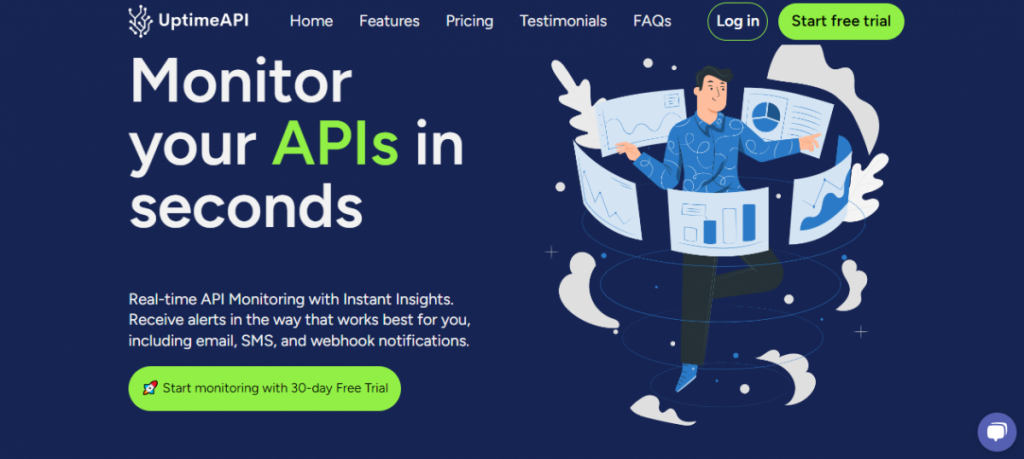In the ever-evolving landscape of digital interactions, API endpoint monitoring has emerged as a critical aspect of ensuring seamless connectivity and reliable service.
Let’s dive into what API endpoint monitoring is, why it’s indispensable, and how it can fortify your digital infrastructure with tools like UptimeAPI.

What is API Endpoint Monitoring?
API endpoint monitoring refers to the practice of systematically observing and assessing the performance and availability of application programming interfaces (APIs). These APIs serve as the connective tissue that allows various software systems to interact with each other. It’s akin to having a watchful sentinel guarding the gateway to your digital realm.
Why You Need to Ensure Success
Ensuring the success of your APIs is not merely an option; it’s a necessity in the digital age. Businesses depend on APIs for data exchange, third-party integrations, and even customer-facing services. A hitch in the API’s performance can lead to customer dissatisfaction and financial losses.
Understanding API Endpoint Monitoring
Defining API Endpoints
API endpoints are the specific URLs or paths through which APIs can be accessed. Monitoring these endpoints is crucial for identifying and addressing issues promptly.
Monitoring API Performance
API performance encompasses various parameters, such as response time and uptime statistics. Keeping a keen eye on these metrics can help you detect potential problems and improve user experiences.
Real-time vs. Periodic Monitoring
Real-time API monitoring ensures instant detection of issues, while periodic monitoring offers a broader perspective. The choice between the two depends on your specific needs and resource availability.
Common API Issues and Challenges
- Downtime and Reliability: Frequent API downtime alerts can harm your reputation and business operations.
- Performance Degradation: Slow response times and glitches can drive users away.
- Security Concerns: Inadequate API security can result in data breaches and loss of trust.
- Compliance and Data Integrity: Ensuring that your APIs adhere to compliance standards is vital to protect sensitive information.
Why Do We Recommend UptimeAPI?
For businesses and organizations keen on maintaining a strong online presence, UptimeAPI is an invaluable tool.
First and foremost, UptimeAPI offers reliability by monitoring website and server uptime with sophisticated algorithms and real-time monitoring capabilities. It ensures you are promptly notified of any downtime issues, allowing for quick resolution and the prevention of potential disruptions to your online operations.

Additionally, UptimeAPI features a user-friendly and highly customizable interface, making it accessible to users of all technical backgrounds. Its adaptability is a key aspect, empowering you to focus on the specific elements of your online infrastructure that matter most.
Furthermore, it provides robust reporting and analytics features that offer insights into your API’s performance over time. Through the analysis of historical data and trends, you can make informed decisions to improve your website’s overall reliability and optimize uptime. This data-driven approach to website management can save time and resources while delivering a seamless online experience for your users.
How To Use It:
- Go to UptimeAPI and simply click on the button “Start monitoring with 30-day Free Trial” to start using the tool.
- After signing up in UptimeAPI, you’ll get your personal Trail. Click on the Monitors option.
- Click on the New Monitor button and add the API details with the API name and URL.
- Once you do this, make the API call by pressing the button “Create” and see the results on your screen.

